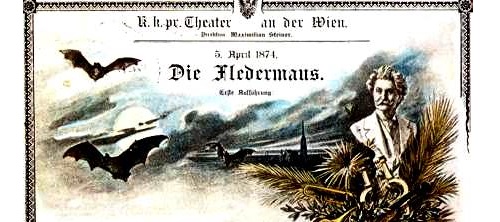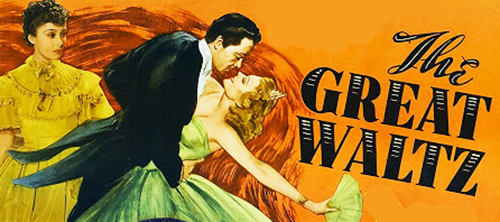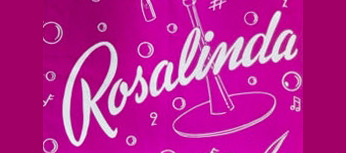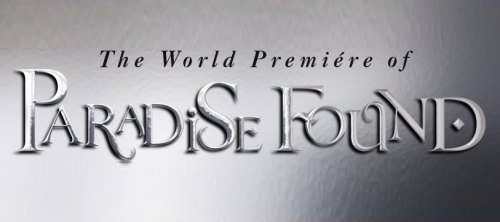Pas de biographie disponible.
Compositeur Musique additionelle Librettiste Parolier Metteur en scène Chorégraphe Producteur création Producteur version

Opérette
Musique: Johann Strauss II • Paroles: Richard Genée • Livret: Carl Haffner • Richard Genée • Production originale: 5 versions mentionnées
Dispo: Résumé Synopsis Génèse Liste chansons
Die Fledermaus est sans conteste le grand chef-d’oeuvre de Johann Strauss et l’opérette viennoise par excellence. Sur fond de désastre économique et social, Strauss compose, en 1874, cette oeuvre emplie d’allégresse et de vitalité, dans laquelle airs brillants et valses, certaines parmi les plus célèbres du répertoire, dominent la pièce. Les personnages se retrouvent au coeur d’un bal masqué à Vienne, et sous son déguisement, chacun recherche l’ivresse et l’exaltation de l’amour et de la séduction. Après plusieurs quiproquos et supercheries, tous s’entendent pour blâmer le « Roi Champagne », cause de toutes les incartades. L’oeuvre, adaptée d’après la pièce française Le Réveillon, est traditionnellement jouée à Vienne, chaque année, le soir du 31 décembre.
Genèse: Die Fledermaus (en français, La Chauve-Souris) est une célèbre opérette viennoise de Johann Strauss II composée en 1874 et créée au Theater an der Wien de Vienne le 5 avril 1874. À la base du livret, une pièce autrichienne de 1851, Das Gefängnis (La Prison) adaptée par Henri Meilhac et Ludovic Halévy en 1872 sous le titre "Le Réveillon". L'œuvre retourne à Vienne, où l'histoire est transformée par Richard Genée et Karl Haffner. Strauss achève la partition en 42 jours. Créée en français à Paris le 30 octobre 1877 sous le titre La Tzigane, dans une version remaniée de Delacour et Wilder, elle ne rencontre le succès qu'à partir de 1904 dans une nouvelle adaptation de Paul Ferrier.
Résumé: Gabriel von Eisenstein doit aller en prison y purger une courte peine pour outrage. Son ami Falke lui conseille de se rendre malgré tout, et à l’insu de sa femme Rosalinde, au bal masqué du prince Orlofsky. Rosalinde a prévu de recevoir entre temps son amant Alfred. Mais ce plan est contrecarré du fait qu’ Alfred est écroué par le directeur de la prison à la place d’Eisenstein. Rosalinde se rend elle aussi au bal d’Orlofsky… où Eisenstein met tout en oeuvre pour séduire une beauté inconnue, masquée qui lui subtilise sa belle montre. Le lendemain, Eisenstein s’annonce à la prison où Alfred est enfermé à sa place. Et les relations étranges sont toutes élucidées : il apparaît qu’Eisenstein a séduit sa propre femme (ce que prouve la montre). On passe l’éponge sur cet épisode et le champagne est déclaré coupable de tout…
Création: 5/4/1874 - Theater an der Wien (Vienne) - représ.

Musical
Musique: Johann Strauss I • Johann Strauss II • Paroles: Desmond Carter • George Forrest • Oscar Hammerstein II • Robert Wright • Livret: A.M. Willner • Moss Hart • Production originale: 4 versions mentionnées
Dispo: Résumé Génèse Liste chansons
Genèse: The Great Waltz debuted on Broadway at the Center Theatre on September 22, 1934 and ran for 289 performances. The production was directed by Hassard Short and presented by Max Gordon, with choreography by Albertina Rasch, settings by Albert Johnson and costumes by Doris Zinkeisen together with Marion Claire, Marie Burke and Guy Robertson. The musical was made into a motion picture by MGM in 1938 with a screenplay and new lyrics by Oscar Hammerstein II. In 1949 impresario Edwin Lester hired Robert Wright and George Forrest to adapt Strauss's German lyrics and music for a production at the Los Angeles Civic Light Opera. This version was used for a London revival that opened at the Drury Lane Theatre on July 9, 1970 and ran for 605 performances. It was also used for a 1972 film remake.
Résumé: Set in Vienna in the spring-time, featuring a conflict between a father and his son, laced with overtures of romance; and though it all a score comprising some of the most loved waltzes ever writeen by the father and son on whose lives the plot is based, and who are truly regarded as the greatest waltz composers of all time. Among a host of tunes, this show contains both "The Radetzky March" and, of course, "The Blue Danube".
Création: 22/9/1934 - Center Theatre (Broadway) - 298 représ.

Musical
Musique: Johann Strauss II • Paroles: Paul Kerby • Livret: Carl Haffner • Richard Genée • Production originale: 1 version mentionnée
Dispo:
Die Fledermaus (La chauve-souris) () de Johann Strauss a été créée le 5 avril 1874 au Theater an der Wien, en Autriche, et est devenue l’une des opérettes les plus populaires jamais écrites. Les mélodies luxuriantes de Strauss sont parfaitement liées à l’histoire légère d’un mauvais comportement amoureux, de tromperies conjugales et d’identités erronées. L'œuvre a été jouée à New York de nombreuses fois en allemand et en anglais mais il faut compter aussi un certain nombre d’adaptations américaines notables dont adaptations: The Merry Countess (Casino Theatre, 20/8/ 1912 - 135 représentations - adaptation de Gladys Unger, paroles de Arthur Anderson); A Wonderful Night (Majestic Theatre, 31/10/1929 - 125 représenttions - adaptation de Fanny Todd Mitchell) et Champagne, Sec (Morosco Theatre, 30/10/ 1933 - 113 représentations). Rosalinda est de loin la version américaine la plus réussie, avec un total de 521 performances.
Genèse:
Résumé:
Création: 28/10/1942 - 44th Street Theatre (Broadway) - 521 représ.

Musical
Musique: Johann Strauss II • Paroles: Ellen Fitzhugh • Livret: Richard Nelson • Production originale: 1 version mentionnée
Dispo: Résumé Commentaire Génèse Isnpiration Liste chansons
Genèse: In an interview, Hal Prince said that the musical would "center on a Middle Eastern ruler who travels to Vienna in search of romantic 'inspiration,' and the machinations that occur when he demands a rendezvous with a noblewoman who turns out to be the empress of Austria." It had been planned to bring the musical to Broadway after its premiere in London. Early readings featured John Cullum, Mandy Patinkin, Shuler Hensley, Judy Kaye, Emily Skinner, Rebecca Luker and Kate Baldwin. Paradise Found opened in London on May 26, 2010, after previews starting on May 19, at the Menier Chocolate Factory and closed on June 26. The musical was directed by Prince and Susan Stroman (who also choreographed), with scenic design by Beowulf Boritt, costume design by Judith Dolan and arrangements and orchestrations by Jonathan Tunick. The cast featured John McMartin as the Shah of Persia, Mandy Patinkin as a Eunuch, Shuler Hensley as the Baron, Judy Kaye as Frau Matzner and Kate Baldwin as Mizzi.
Résumé: A sexually exhausted Shah of Persia comes to late 19 th Century Vienna and asks his eunuch to procure the sexual services of the Empress of Austria to stimulate his jaded appetite. His eunuch conspires with a Viennese baron to substitute an Empress look-alike, who is really a courtesan called Mizzi, and to disguise the local brothel as a Palace. Having thus fooled the Shah, the aristocrat himself, both client and lover of Mizzi, becomes intensely jealous, and even more so when the Eunuch, by virtue of his (lack of? ) assets, is allowed to view several Viennese sexual escapades with voyeuristic delight. So, the Shah is in love with Mizzi, who is in love with the aristocrat, who is also having an affair with the soap manufacturer’s wife. . .
Création: 26/5/2010 - Menier Chocolate Factory (Londres) - représ.

.png)
.png)




